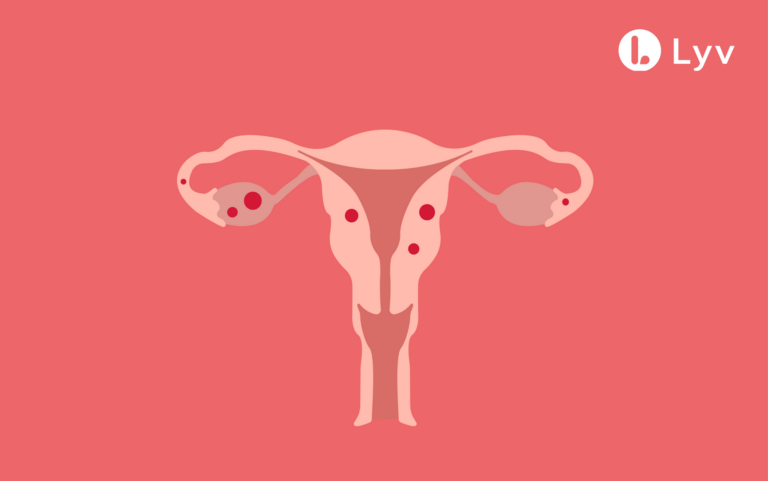Bringing a new baby into the world is as exhilarating as it is daunting. Questions seem to multiply: How long can you stay home? Who will protect your job while you’re away? What about finances, emotional health, or navigating the paperwork labyrinth? Suddenly, “maternity leave” is no longer a distant term but an everyday reality, stirring up a whirlwind of feelings and logistical puzzles. The prospect of balancing your work identity and family life can feel overwhelming, but knowledge is a powerful stabilizer. Delve into the essential aspects of maternity leave, from entitlements and formalities to paternity support and societal progress, all through a perspective tuned to the concerns—and hopes—of parents ready to welcome change.
The Foundations of Maternity Leave: What Every Parent Should Know
Maternity leave serves as both a buffer and a bridge—a period of authorized absence that allows mothers to recover from pregnancy, bond with their child, and initiate the journey of parenthood without the threat of job loss. Across the globe, frameworks differ, but the primary goal is universal: bolster both the physical restoration of mothers and the emotional attachment between parents and babies. Studies highlight links between sufficient paid leave, prolonged breastfeeding, reduced neonatal mortality, and stronger parent-infant relationships. No surprise, then, that many modern workplaces and societies increasingly appreciate caregiving as a legitimate social contribution—not merely a deviation from professional activity.
Yet, what does this mean for parents anxious about financial security or professional standing? Picture a legal and social architecture that attempts to shelter families—sometimes robustly, sometimes with gaps. The shift away from defining pregnancy as a “short-term incapacity” signals a broader recognition of the profound physical and psychological adaptation new families undergo. Flexible work conditions, co-parenting encouragement, and thoughtful return-to-work strategies now surface as vital supports.
The Tapestry of Maternity Leave: Types, Duration, and Practical Variations
Does your situation involve adoption, surrogacy, or pregnancy loss? Contemporary maternity leave isn’t one-size-fits-all but a layered structure tailored to family realities. Standard leave (often spanning 14–26 weeks paid, varying by country) anchors these entitlements. For comparison, consider India’s generous 26 weeks for most mothers or France’s 16-week arrangement, split between pre- and post-birth periods. In some systems, missed prenatal days can be reassigned to postnatal leave, maximizing recovery time. If pregnancy ends in miscarriage or medical interruption, paid leave—often around six weeks—embodies a recognition of both physical trauma and emotional needs.
Intricacies abound. Some policies allow the postponement of prenatal leave (with medical clearance), lengthening postnatal time. Adopting families and commissioning parents via surrogacy also benefit from bespoke arrangements, anchoring legal and psychological support for varied family stories.
Quicker reintegration is less daunting where employers supplement statutory leave with amenities: on-site childcare, structured nursing breaks, or remote work possibilities. For working parents, these gestures tip the scale toward well-being, signaling that career need not eclipse caregiving.
Legal Protections and Eligibility: Who Can Claim Maternity Leave?
Ever wondered what shields your right to return after maternity leave? Laws—often underpinned by international frameworks like the ILO’s minimum 14-week mandate—grant entitlement to paid, protected time off. Eligibility typically hinges on continuous employment (e.g., 12 months in Australia or 80 days in India), with documentation requirements spanning pregnancy proof, formal applications, and timely notification to both employer and health insurance.
For parents outside standard employee contracts—gig workers and the self-employed—security is less predictable. Some states extend social benefits, yet patchwork gaps persist. Where companies surpass minimum legal standards, extra paid weeks or flexible schedules can become a lifeline. Seeking clarity from HR or local authorities can illuminate rights that seem shrouded in red tape.
The Financial Landscape of Maternity Leave: Balancing Benefits and Budget
The specter of income loss looms large. How is paid maternity leave computed? Commonly, benefits approximate the mother’s recent average earnings, but “100% pay” is sometimes capped or tiered. For instance, in France, eligibility depends on salary history and tenure, with payouts arranged by employer or the national health system. Some jurisdictions add bonuses—government incentives or employer “top-ups”—to supplement statutory amounts.
Unpaid leave, a fallback for extending precious days at home, typically preserves job protection but forfeits regular salary. Budget reshuffling may become necessary. Anticipating financial needs, understanding entitlements, and exploring parallel options such as employer-provided childcare or government assistance can buffer families against surprises.
Navigating Administrative Steps: How to Request Maternity Leave
Feeling lost in a maze of forms and deadlines? The process, though bureaucratic, follows a predictable rhythm: promptly inform your employer (preferably during the second trimester or at least eight weeks ahead), furnish a medical certificate specifying the due date, and communicate with insurance or family benefit organizations. Some systems request the medical certificate from the first prenatal visit by a set gestational week; in France, this is often before the end of week 14.
Best practice? Early, transparent discussions enable arrangements that lessen anxiety and smooth the transition. Don’t overlook the logistics of a work handover—prepare a summary of responsibilities, train replacements, and specify communication boundaries during leave. On returning, a brief formal notice helps set expectations and ensures a confident reintegration.
Employer Obligations and the Landscape of Workplace Support
Your employer is more than a passive observer. Legal responsibility dictates not only processing of paid leave but also ensuring your job, salary, and seniority are preserved. Dismissal or discrimination—before, during, or after maternity leave—is prohibited and subject to significant penalties. Many larger companies must provide childcare facilities and honor requests for breaks dedicated to breastfeeding.
Support for return—not just a desk and a welcome-back email—may include mentoring, phased hours, or temporary reduction in workload. Safe environments, reduced physical strain, and access to resting areas are enshrined protections, supporting healing and adjustment. Company handbooks or collective bargaining agreements may confer additional flexibility and benefits, making thorough review a wise step.
Employee Rights, Health, and Emotional Well-Being
Could your career progression take a hit after maternity leave? Legal frameworks exist precisely to guard against this. Job restoration, continued benefits, access to facilities—including breastfeeding rooms—and prohibition of negative bias in evaluations form a safety net. Penalties for contravention are substantial, reinforcing compliance.
Health-wise, the physical implications of childbirth run deep: the uterus and pelvic floor require weeks to recover, hormonal shifts influence mood and energy, and sleep fragmentation is common. Medical authorities stress the value of ample rest, gradual activity resumption, and access to support (peer networks or healthcare professionals). Positive phased returns and mentorship offer cognitive and emotional scaffolding—key for parents adapting to a transformed landscape.
Beyond Maternity: Paternity Leave and Special Family Circumstances
What if another parent or partner wants to step in? Evolving standards see paternity leave and “second-parent” entitlements gaining ground—France, for example, offers at least 25 days split flexibly. Clear notification (often one month in advance) is required. In challenging scenarios—preterm births, pregnancy loss, or adoption—additional leave rights and compassionate policies apply. Consulting health insurers, employers, or local advisors may unlock tailored support best suited to complex moments.
Obstacles, Stigma, and the Path Forward
The notion of “stigma” around maternity leave persists, particularly in work cultures that prize availability over family balance. Parents may fear career penalty or lost progression opportunities. The antidote? Transparent dialogue, clear anti-discrimination procedures, education of both staff and managers, and reinforcement of individual choice. For smaller companies, adaptation is often tougher, with temporary staff or reassignments to manage workload. Delays in payment or paperwork add another layer of stress, making early engagement with HR and official resources advisable.
Global Perspectives and Future Directions for Parental Leave
Across the world, the maternity leave landscape is a patchwork. Some nations—Sweden, Norway—lead in gender-neutral parental leave and shared quotas. The UK hovers at 52 weeks (with a blend of paid and unpaid), while US federal provisions stretch to only 12 weeks, unpaid, creating pressure for working parents. Calls for equity are echoed in international treaties and emerging national laws.
Looking forward, “best practice” converges on: non-transferable, well-compensated leave quotas for each parent; inclusivity for adoption and surrogacy; flexible return processes; and visible normalization of paternal caregiving. Medical data consistently links robust paid leave to improved maternal mental health, sustained breastfeeding rates, reduced infant mortality, and richer parent-child attachment. It’s a transformation, not just for families, but for society as a whole.
Key Takeaways
- Maternity leave is shielded by law and medical best practice, supporting physical, emotional, and social adaptation after childbirth.
- Duration and benefits remain highly variable depending on country and employer, but paid leave, job protection, and safe working conditions are widespread norms.
- Timely, clear notification and documentation are vital for accessing entitlements and smoothing logistical transitions.
- Progressive workplaces often add extra support—childcare options, mentoring, or flexible hours—to statutory leave provisions.
- Legal frameworks protect against discrimination, lost promotion, or “mommy track” setbacks after returning to work.
- Both mothers and secondary parents increasingly access gender-neutral or shared parental leave, reflecting diverse family needs and equal caregiving.
- Special cases—such as adoption, surrogacy, or pregnancy loss—are addressed through bespoke forms of leave and support, underlining a commitment to well-being.
- Emotional recovery, breastfeeding support, and phased work returns strengthen family health—medical advice and peer resources are invaluable here.
- There are numerous resources and professionals to help lighten the load. For personalized advice and free health questionnaires for children, parents are encouraged to explore the Heloa app, an essential ally for informed and reassuring parenting.
Questions Parents Ask
How does maternity leave work for self-employed or freelance parents?
For self-employed parents and freelancers, access to maternity leave can feel uncertain. Unlike salaried employees, independent workers do not always benefit from the same legal protections or financial compensation. However, in several countries, dedicated social protection schemes exist, sometimes via health insurance or government programs, to support self-employed mothers during this period. Eligibility criteria and benefit amounts may depend on social contributions paid before pregnancy and on officially registered professional status. If you are self-employed, remember to check with your national social security or health insurance provider—many offer tailored allowances or support options that can ease the transition. Reassure yourself: solutions are often possible, and organizations can help clarify your rights.
Can both parents take leave at the same time after the birth of a child?
Yes, in many countries, it is possible for both parents to benefit from leave immediately after childbirth. This approach encourages shared parental responsibilities and supports family adjustment during a sensitive time. The details—such as simultaneous or consecutive leave, duration, and payment—vary widely depending on national legislation and employer policies. Sometimes, a portion of parental leave is specifically designed for shared use, enabling both parents to be present together during the first weeks. If you are considering this solution, try to plan ahead and discuss arrangements with your employer or HR department, as well as explore country-specific options. Every family dynamic is unique, and joint leave can offer precious moments of bonding without affecting employment security.
Are there specific maternity leave arrangements for multiple births (twins, triplets, etc.)?
Parents expecting twins, triplets, or more may be entitled to extended maternity leave compared to single births. Many countries acknowledge the additional physical and organizational demands by offering longer periods of paid or unpaid leave and, in some cases, increased financial support. These arrangements might also include extra days for fathers or second parents, recognizing the importance of team effort. If you are awaiting a multiple birth, consider asking your healthcare provider or a legal advisor about the best ways to approach your employer and apply for possible extensions. There is support available to help you navigate these exceptional situations, ensuring both parents and babies feel accompanied and protected.
Further reading:








